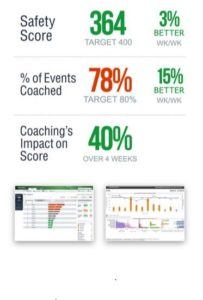
ATRI: Safety is a Top Priority
Earlier this year, ATRI’s Research Advisory Committee (RAC) identified six priority research topics for 2019, which were subsequently approved by ATRI’s Board of Directors. Interestingly, of the six, four are focused on safety-related issues:
- Rethinking mileage-based safety metrics
- Analyzing younger driver safety in intrastate driving
- Revising the ROI of truck safety technology
- Impact of “nuclear” verdicts on trucking
ATRI is focused on a mission to conduct transportation research (with an emphasis on the trucking industry’s essential role in a safe, efficient and viable transportation system). Its research includes congestion and mobility; economic analysis; safety and security; technology and operations; environment; and transportation infrastructure. Let’s dig deeper into the safety-related issues.
Rethinking Mileage-Based Safety Metrics
Given the growth in E-commerce and other changing industry trends, which have changed trip lengths and route locations, it’s important to examine the potential for new metrics to evaluate safety performance beyond traditional rates per million vehicle miles traveled.
New metrics to evaluate safety performance that best-run fleets are using include data and analytics from their fleet management software to predict problems, trends and behavior patterns. Driving data, engine data and fleet performance all play a part in better understanding a fleet’s safety and providing inputs for improvement. One of the best ways for a fleet to drive performance is to delve into the granularity of its drivers’ Safety Scores.
The Safety Score enables objective comparison of drivers, and measures behaviors like following too close or speeding, as well as seat belt compliance, mobile device use and other behaviors you can only get from the use of video. It is an important component to a Driver’s Scorecard as it allows monitoring of driver performance in real time.
The Driver Scorecard is:
- A complete, unbiased view of driver performance – data compiled across many types of activities, including safe driving, MPG, miles driven, coaching and more so managers can stay focused on other aspects of their fleet
- Customizable so that the solution can be tailored to meet each fleet manager’s specific needs and goals
- Flexible, so that as a fleet’s needs evolve, fleet managers can easily add other analytic solutions to build upon driver success and continue development of world-class drivers
In addition, a Driver Scorecard provides:
- Trends: Real-time data based upon drivers’ safety scores
- Skills Data: What is contributing to driving their scores, so the fleet or safety manager can focus on the most common risks
- Benchmarks: Comparisons against the company, to identify where each driver is better and where each driver is performing below the company averages
It’s time to look beyond mileage-based safety metrics. If you’re just looking at mileage-based safety metrics, you might be missing something. For instance, has your driver been lucky that he has driven x miles without an incident, or has he truly demonstrated safe driving skills over that period of time? There’s much more available to help you make your fleet safer and to measure the results.
Part two: Analyzing Younger Driver Safety in Intrastate Driving
- Posted by Melissa.Senoff@smartdrive.net
- On 21 August 2019